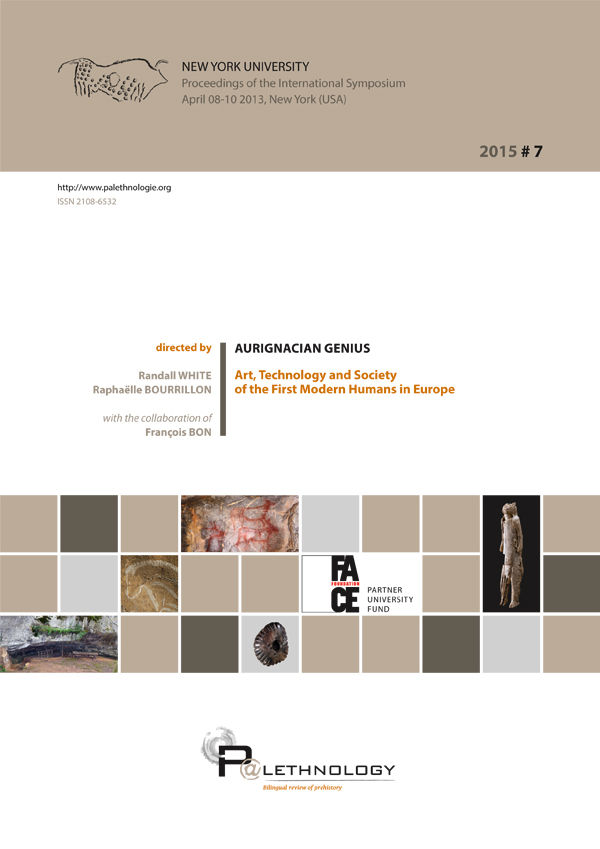EARLY AURIGNACIAN GRAPHIC ARTS IN THE VÉZÈRE VALLEY:
In Search of an Identity?
Raphaëlle BOURRILLON, Randall WHITE
Abstract
Since 2007, programmed excavations directed by R. White in the Aurignacian sites of Blanchard and Castanet have resulted in renewed studies of graphic art representations and have led to a new approach to some of the earliest parietal art from a cultural, chronological and environmental perspective. The analysis of the formal and technical artistic characteristics within each archaeological context as part of all the known representations on limestone blocks in rock shelter habitation sites in the northern Aquitaine reveals a form of cultural territory.
Although certain graphic, as well as socio-economic choices, seem to be used partly as identity markers, convergences with other European regions can also be observed. These graphic representations thus seem to express both the need to mark out territory and at the same time, a sense of belonging to a wider cultural entity. This dichotomy undoubtedly contributes to the broad stylistic diversity present at the beginning of the Upper Paleolithic. In this paper, we seek to define the reasons for such diversity of behavior and graphic arts within the Aurignacian culture.

